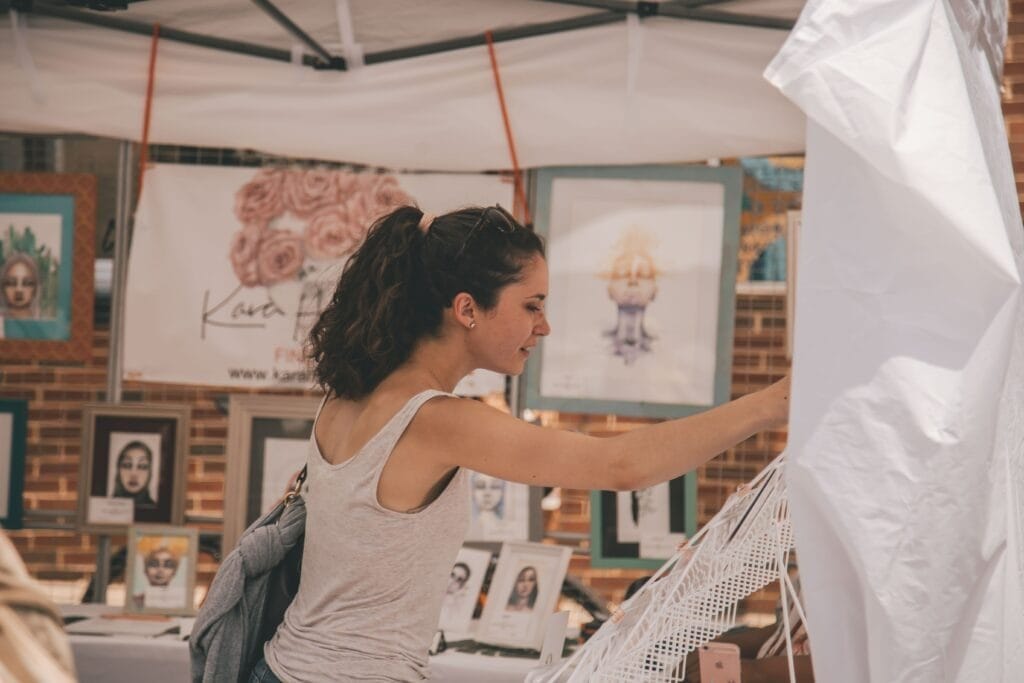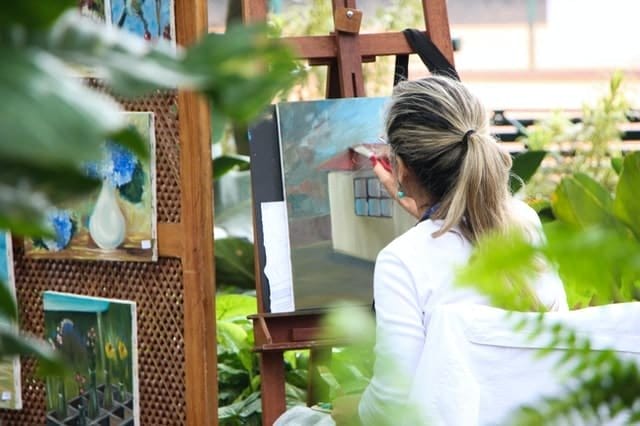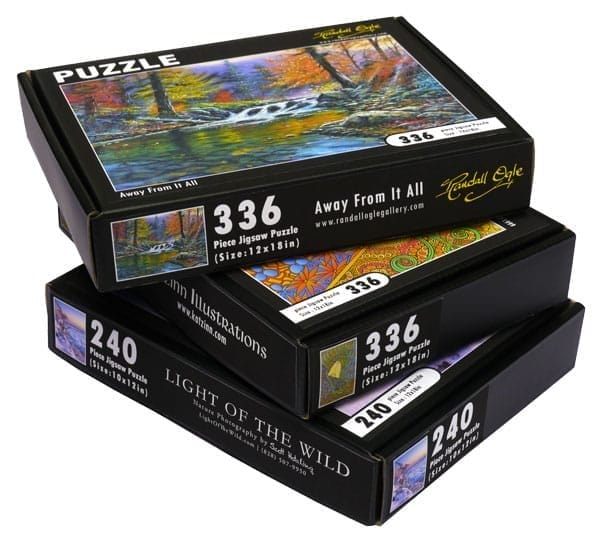
Art Fair Vendor Booth Ideas and tips for Success
Art fairs are a place where art collectors, buyers, and enthusiasts come together to buy and sell contemporary artwork. They provide a space for people to experience art in a variety of ways and often include live music, food, and drinks. Some fairs also offer educational seminars and lectures on art and design.
There are many types of art fairs that cater to different tastes and preferences. Often, these are held at the same time as other art-related events, such as film festivals or gallery openings, which makes them even more attractive for visitors.
The goal of an art fair is to create an environment where people can buy, sell, and experience art all in the same place.
How much is a booth at an art fair?
A booth at an art fair can cost anything from $500 to $10,000. The price of a booth can depend on the size of the space, location, and amenities that come with it. This is why it is important to know what you are looking for in your booth before you start shopping.
If you are looking for a small space with affordable prices, then you should consider an art fair that is located close to your home. If you want to get exposure in other parts of the country or world then it may be worth paying more for a larger space at a more expensive event.
7 Overlooked Preparations for a Successful Art Fair
There are many things you can do to make this experience profitable for yourself and fun for the attendees. Here are 7 often overlooked art booth set-up preparations that can help you have the best art fair experience possible.
1. Practice Your Sales Pitch
A key aspects of having a successful art fair booth is being able to effectively communicate with visitors about your work. This means mastering the art of the sales pitch. This skill not only helps you engage with potential buyers but also allows you to share your passion and knowledge about your artwork. By perfecting your sales pitch, you can create a memorable experience for visitors, which can lead to increased sales and a growing fan base.
To start, spend some time reflecting on your artistic journey and the inspiration behind your work. This will help you craft a compelling story that you can share with booth visitors. Check out our post on How to Write a Compelling Artist’s Statement. People are often drawn to the story behind a piece of art, so having a well-prepared narrative can make your work stand out.
Part of being personable is knowing how to answer those dreaded questions,
- What kind of art do you make?
- What inspires you?
- How would you describe your work?
- How long have you been creating art?
- Can you tell me more about the materials and techniques you use?
These are tough questions to answer, but you have a huge advantage in knowing that they are coming. Spend some time thinking about how to answer these challenging questions ahead of time. Don’t miss out on opportunities to make connections with booth visitors that are expressing some interest in what you do.
A large part of effective selling is to practice active listening and be responsive to the needs and interests of your visitors. This means asking questions to better understand their preferences and recommending pieces that align with their tastes. By personalizing your sales pitch, you can create a more meaningful connection with your audience.
2. Perform a Live Activity at your Art Booth to Attract Attention

Take your booth to the next level by working on your art in front of an audience. This is a great way to create a buzz and attract people to your stand. By showing an art piece in progress, prospective customers can connect more easily with you, and makes your art more accessible. It’s a great way to turn passersby into new fans of your work.
To begin, think about which aspect of your art creation process would be most engaging and visually appealing to an audience. This could be anything from painting or drawing to sculpting or printmaking, depending on your medium of choice. Ensure that the activity you choose is feasible within the confines of your booth and be mindful of any potential hazards, such as fumes or sharp tools.
Once you’ve decided on the live activity, create a designated space within your booth for the demonstration. This area should be visible to passersby and have enough room for interested onlookers to gather and observe. Additionally, make sure you have all the necessary materials and supplies on hand so that your demonstration runs smoothly.
Plan your demonstration to coincide with peak foot traffic times at the art fair to maximize your potential audience. If possible, schedule multiple demonstrations throughout the day to cater to different visitors and increase the chances of attracting a crowd.
Promote your live activities ahead of the art fair by sharing the details on your social media channels and your website, and creating eye-catching signage for your booth. This will help generate interest and anticipation for your demonstration and encourage visitors to specifically seek out your booth during the event.
3. Bring an iPad or tablet so you can show off your Online Art Gallery.
Without a proper art gallery website, your success is limited to what you can sell at the art fair itself. It may not be possible to display all your work at your booth so allowing visitors to browse your work via your online gallery, allows for more interaction with prospective customers, and potentially more sales.
With an iPad or tablet in hand, you can create an interactive experience that engages potential buyers and art enthusiasts alike. This digital platform allows you to share high-resolution images and videos of your artwork, demonstrate your creative process, and even present works that have already been sold or are too large to display at the fair.
Setting up your device for easy browsing is an essential step in making this idea a success. Ensure that your online gallery is optimized for mobile viewing and that your device is connected to the internet, preferably through a secure Wi-Fi connection or a personal hotspot. Consider using a tablet stand or holder to make it easy for visitors to navigate your digital gallery.
In addition to showcasing your artwork, your iPad or tablet can also serve as a convenient tool for collecting contact information from interested visitors. Encourage them to sign up for your newsletter or follow you on social media directly from the device. This helps you stay connected with potential buyers and fans, creating opportunities for future sales and interactions.
To further enhance your art vendor booth, you can use your device to display a digital slideshow or a looping video showcasing your work. This visual element can attract attention and create a dynamic atmosphere within your booth, drawing in visitors and piquing their curiosity.
4. Offer a Range of Products at Different Price Points

All types of people walk around art fairs so the more choice of art products you can offer them, the more sales you will make. There is only a limited number of people that want to buy originals or prints so if that’s all they see at your booth, you are limiting your potential to make sales.
Diversifying the products available at your art vendor booth is a smart strategy to appeal to a wider audience and increase your sales potential. In addition to original artwork and prints, consider offering a variety of art merchandise, such as art jigsaw puzzles, tote bags, apparel, and stationery products, featuring your designs.
Art jigsaw puzzles, in particular, have become a popular and unique way for art enthusiasts to enjoy and engage with their favorite pieces. By transforming your artwork into puzzles, you create a fun and interactive experience for your customers. Puzzles cater to a wide range of age groups and interests and can make fantastic gifts for art lovers.
When selecting which pieces to turn into art merchandise, consider the versatility of your artwork and how it could translate to various products. Choose designs that will appeal to a broad audience, and ensure that the quality of the merchandise reflects the high standards of your original artwork.

In addition to art jigsaw puzzles, there are numerous other art merchandise options to explore. Check out our article in Art Merchandise 101 for more information on creating products from your art.
By offering a range of art merchandise at different price points, you can cater to various budgets and preferences, giving you the opportunity to reach new customers and increase your overall sales. Furthermore, merchandise can also serve as a form of promotion, with fans showcasing and sharing your work with their friends and family, potentially expanding your audience and fan base.
By embracing art merchandise and including items such as art jigsaw puzzles in your booth, you can enhance your art fair presence and provide visitors with a diverse selection of products that celebrate your creativity and talent.
5. Bring a Camera
In this new connected world, it’s a great idea to have some photos taken of your art booth display. This is excellent content for your social media or your blog posts. If your camera is capable of taking video, then shoot a short clip and post it on youtube and Facebook with a link back to your online gallery or blog.
If you are lucky enough to make a few sales, ask your customer if they would mind you taking a photo with them for your Facebook page. Take advantage of these opportunities to create an online buzz. The more content you can generate around your art and brand, the more interest you will generate from engaged visitors and customers.
6. Run a Raffle or Small Giveaway
Creating excitement at your art vendor booth is an essential part of attracting visitors and making lasting connections. One effective way to achieve this is by running a raffle or small giveaway featuring your art merchandise or a limited-edition print.
This not only captures the attention of passersby but also provides an opportunity for you to engage with potential customers and gather valuable contact information for future marketing efforts.
To organize a successful raffle or giveaway, follow these steps:
Running a raffle or small giveaway at your art vendor booth not only generates excitement and interest but also serves as an effective means of engaging with potential customers and expanding your network.
7. Email your New Leads after the Art Fair
Sending out an email follow-up the next day after the show has finished is a great way to reach out to new prospective customers. In the email, thank them for visiting your booth and inviting them to check out your online gallery. It’s essential to make sure people remember you and have a way to contact you in the future.
Selling art is the same as selling anything else of value. In most cases, a sale does not happen during the first interaction with a person. The first contact is usually exploratory, with the seller using it to gauge interest and the buyer using it to explore options.
During this exploration, each side can determine whether or not they are willing to make a commitment to explore more. Sales success involves multiple touchpoints and interactions before a prospect makes the decision to purchase.
Email is therefore a valuable tool to keep you and your art in front of a prospective customer and continue a relationship.
In Conclusion
Adopting the above art fair booth ideas will help you promote your brand as an Artist, get exposure for your artwork, and contribute to a successful and profitable art fair.






